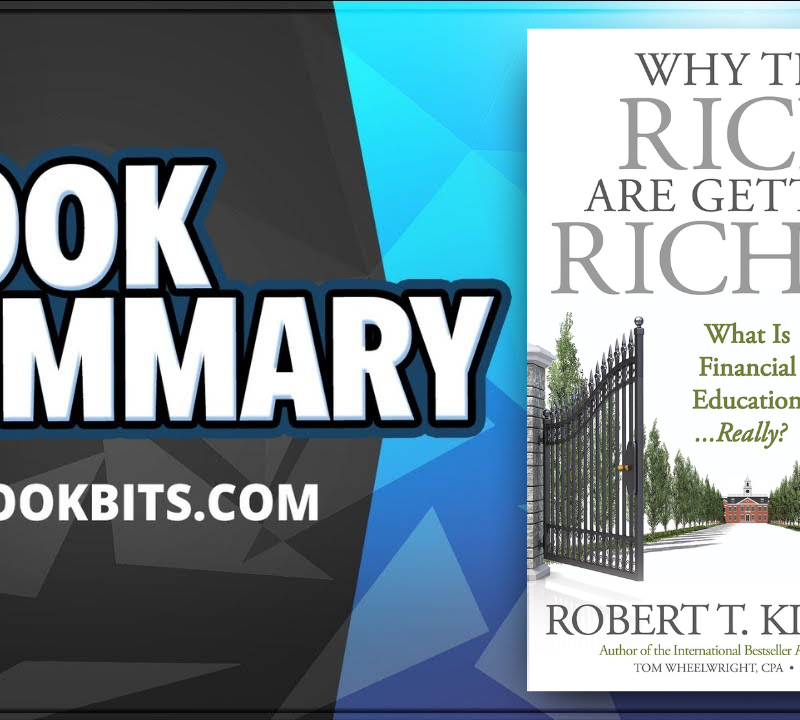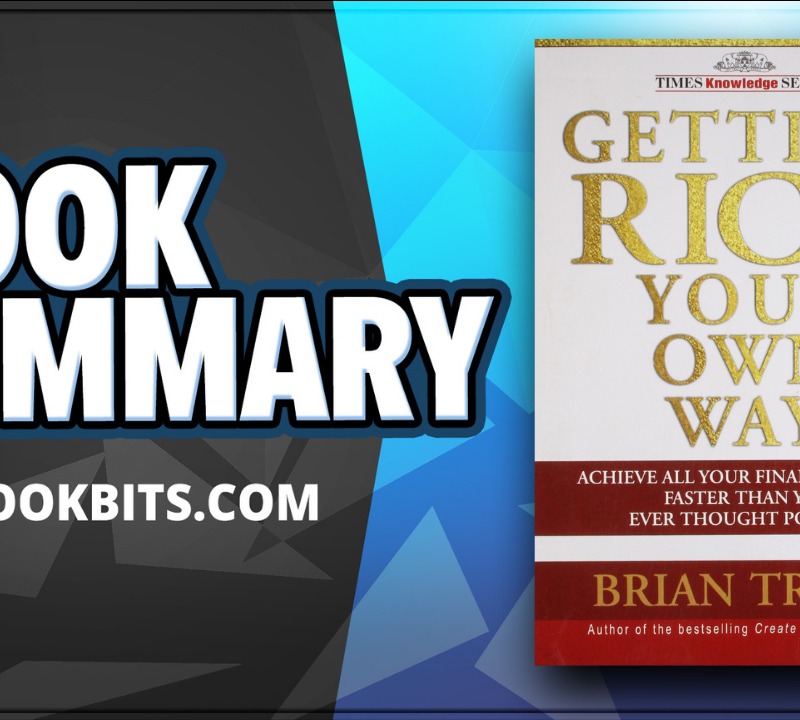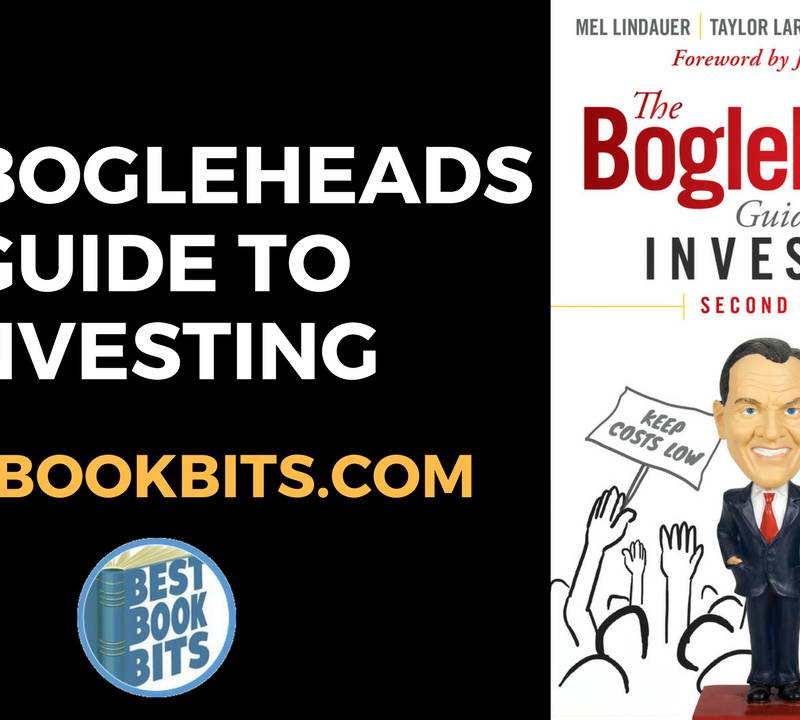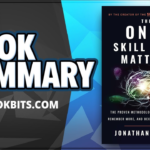DOWNLOAD THIS FREE PDF SUMMARY HERE
Book | 150 PDF Summaries | Course | YouTube | Coaching
Spotify | Instagram | Facebook | Newsletter | Book Club | Website
This Summary Will Help You Learn
- What is an index fund;
- Why these funds are trustworthy investments;
- How the returns of these funds compared to other funds and individual stocks;
- The way emotions, short-run mindset and admin fee impact your investments; and
- Why you must avoid funds traded on the exchange.
Take-Aways
- If you invest in single stocks, there’s high risk. In contrast, index funds don’t have any risk. It’s because they invest in the whole stock market.
- A typical index fund produces enormous returns in the long run. Thanks to the power of compounding.
- Capitalism is a game of positive-sum.
- Attempts to outdo the share market is a zero-sum game. Here, some win while some lose.
- Due to costs and risks, investors can’t beat the market’s return in the long-term.
- Very few money managers outdo long-run market returns.
- Overall share market returns reduce with the increase in share buying and selling.
- The changing returns are because of the emotional aspect of investing. It’s not related to the rise in dividends and earnings.
- Share market wrongly focuses on short-run emotional outcomes.
- In the long-term, management fees lessen overall returns.
The Little Book of Common Sense Investing Summary
Intelligent Investing
Benjamin Graham wrote the “Intelligent Investor” in 1949. Graham was his generation’s wisest fund manager. Hence, his book is also a legend of wise investment advice. He says that many investors don’t have any professional knowledge or training.
Consequently, they don’t check a company’s worth, and it’s stock’s value. Nor can these investors forecast a firm’s share value in the future. Thus, he advises investors to be conservative in their choices. He recommends putting money in a diverse portfolio. And the stocks in such portfolio must be held on to in the long run.
Graham warns investors against depending too much on brokers. He says that these brokers’ commission conflicts with clients’ long-term goals. Graham explains that the odds are never in favor of an investor. He writes positively about mutual funds. But he also points something out about mutual funds. From 1937-1947, a typical mutual fund gave 3% less return than the S&Ps 500 Index. As per Graham, investors should stick to conservative and standard types of investments. No doubt his advisors are as sensible today as during his time.
The World’s First Index Fund
The first index fund for ordinary investors was introduced in 1976. This brought to life Graham’s practical philosophy of investing. The index fund’s name was Vanguard 500. It invested in the 500 firms that were on the S&P 500. The Vanguard Group, a no-commission mutual fund firm, promoted this fund.
The core idea behind index funds is straightforward. Index funds have the highest number of diversified shares. These funds denote a portfolio holding a range of stocks which comprise an index. When the businesses in the index pay dividends, their firms’ value grows. And, so do their share prices. Overall, such growth increases the total value of an index. Hence, as all the businesses in a specific index grow, investors holding those funds prosper too.
American Capitalism – The Ultimate Growth Market
The US share market has come a long way on the growth path. From 1900-2005, the average yearly return rate on all American stocks is 9.6%. This is similar to a 9.5% annual business investment return. The difference of .1% is because of speculation. When one compounds these returns, the outcomes are surprising. Each dollar invested in 1900 increased to $15,062 by 2005. Yes, inflation did reduce the actual growth to $793. But, many investors would still be happy to see their money grow 800 times.
Market Fluctuations
For some periods, share market returns did beat the earnings growth and dividends. This was during the late 1990s and late 1920s. But, eventually, such returns had to come back to the ground. And, the landing is often a severe crash. So what accounts for such swings?
Nearly always, market swings are unrelated to investment economics. Instead, they’re the direct outcome of bringing emotions into investment. The price/earnings (P/E) ratio is proof. Growth markets always have high P/Es. In contrast, bear markets always have low P/Es.
There’s a pattern to the market swings as history suggests. After a decade of positive speculative returns comes the decade of negative ones. Want proof? Consider the lows in the 1910s followed by the booming 1920s. Or the dark period of the 1940s accompanied by roaring 1950s. This pattern fits a statistical concept, i.e. “reversion to the mean.” In the long-run, real share values tend to even out. They monitor basic business investment returns.
Hence, investor perceptions don’t have much meaning when it comes to a business’ real value. It’s because those perceptions correlate with speculative, short-run returns. Speculation is often irrational. The short-term share prices fall and rise depending on emotional elements. These don’t have any relation with a business’ real value.
Prior Performance is a Poor Predictor of the Future
Don’t rely on very high returns increasing because of speculation. They aren’t a sound guide for future returns. They’re no guide at all. It’s an impossible task to predict the rise/fall in a firm’s current value. Some investors may win, while others will lose. The share market is a roll of the dice game. Hence, a wise investor must see speculative high returns with distrust. Equity returns in the long-run don’t depict emotions. Instead, they reflect economics. But, short-term market losses or gains are only about emotions. This factor makes direct investments in a specific stock risky.
Eliminating the Risk
American companies have amazingly strong business basics. Hence, investing in buy-and-hold in US firms is a wise move.
The ideal way to broadly invest is by buying an index fund. This covers the whole market. Your plan must be to buy the entire market. And then, hold on to it for the long-term. This investment principle is a sure win. In contrast, speculative investments will lose over the same time-frame.
Standard & Poor’s 500 Index
The S&P 500 reflects a common share market portfolio. It denotes the 500 most prominent firms in the US. These firms make a list on the grounds of their market capitalization. Hence, it’s a cap-weighted index. The S&P500 depict 80% of all American stocks based on total market value. Fund managers use it as the ideal standard for measuring their investing failure/success. There’s another important measure. It’s the Dow Jones Wilshire Total Stock Market Index. This represents around 5,000 stocks, covering the S&P 500. In the long-term, the returns from both these indexes are similar.
Returns from index funds on these two indexes outdo equity returns over-time. For example, think of a 1976 buy of 1000 shares at $15 per share. This will value at $461,771 in 30 years in the first index fund of the world. Hence, buy-and-hold a broad, diverse index fund for a long time. This will undoubtedly make you a winner.
What about Costs?
Share market investors hardly get the returns they expect. It’s not just because of the lousy stock choice. But, it’s also due to the very high expenses. These cover management fees, broker commission, sales loads and other promotional expenses. When choosing individual shares, investors see a zero-sum game. But, they’re playing a loser’s game after all the costs are subtracted.
The average yearly cost is 1.5% of the total investment for an individual investor. Such cost doubles up for active traders. These include management fees and operating costs. Investors in mutual funds also pay 1.5% in costs. Besides, their sales charges also have an extra .5%. So, let’s suppose a person holds a stock for five years. Then its sales charge will be 1%. Plus, add another 1% yearly to cover the portfolio’s turnover costs.
These costs matter in share investing. The issue is that investors can’t measure their total expenses correctly. It’s because several costs stay hidden. This covers taxes on gains in the stock market. These costs become a considerable amount when seen over the long-term.
An example
For example, think of a mutual fund investor investing $10,000 at age 22. He holds mutual funds for many years. Let’s assume an 8% yearly average return plus 2.5% yearly average cost. This way the net return is 5.5%. Hence, the investment of $10,000 will become $469,000 in 50 years. But, on subtracting costs, the fund’s total value will be $145,400. We haven’t included inflation yet! In this example, cost use up 70% of market accumulation. This is even more frustrating as the investor takes all the risk. And, he’s also accountable for the whole investment capital.
Hence, the example shows that mutual fund investor isn’t likely to gain significant returns. But, many fund managers will benefit a lot.
Cost and Index Funds
For index funds, the cost picture is entirely different. Index funds are very cheap as compared to direct investments in the stock market or mutual funds. The expense ratio for a low-cost index fund is only .15% yearly. Plus, these funds are also tax-efficient.
Index funds are better than other types of mutual funds in many ways. Fund managers manage all mutual funds. And, they get paid high. The issue is that all such money managers compete against one another. Hence, the investor doesn’t make any real gains. Some managers will win, while the others will lose. There’s evidence to prove that mutual fund returns don’t match the share-market. Hence, because of their high costs, mutual funds are a loser’s game.
A Word on Exchange Traded Funds (ETFs)
The index fund market is quite mature now. Hence, many fund firms are launching new products to stand out. These include the Exchange Traded Funds (ETFs). Trading ETFs shares on a short-run basis are possible. But, it’s like a wolf clad in sheep’s skin. Investors can’t compare ETFs trading returns with its real returns. ETFs are costly. Plus, they’re meant for speculative purposes. Hence, they don’t meet the basic index fund requirement. So, avoid them unless you plan on buying and holding.
“SUCCESSFUL INVESTING IS ALL ABOUT COMMON SENSE.”
How Index Funds Should Fit into Your Overall Investment Portfolio
Do you belong to the higher tax bracket? Yes? Then put your money in a “quasi-index” portfolio of high-quality municipal bonds. Or else, invest all your money in an all-American share-market index portfolio. You may also invest fully in an all-American bond-market index. Yes, index funds are also present for bonds. An index fund is a secure investment if held over the long-run.
The Little Book of Common Sense Investing Quotes
“Most investors, both institutional and individual, will find that the best way to own common stocks is through an index fund that charges minimal fees.” (Warren Buffett)
“Successful investing is all about common sense.”
“The intelligent investor will minimize to the bare bones the costs of financial intermediation.”
“The higher the level of their investment activity, the greater the cost of financial intermediation and taxes, the less the net return that the business owners as a group receive.”
“Fund investors are confident that they can easily select superior fund managers. They are wrong.”
“The more the managers take, the less the investors make.”
“Mutual funds charge 2% per year, and then brokers switch people between funds, costing another three or four percentage points… the general public is getting a terrible product from the professionals.” (Charles T. Munger)
“Investors as a group fail to earn the returns that our corporations generate through their dividends and earnings growth, ultimately reflected in the prices of their stocks.”
“It is investment returns – the earnings and dividends generated by American business – that are almost entirely responsible for the returns delivered in [the] stock market.”
“The expectations market is about speculation. The real market is about investing.”
“By periodically investing in an index fund, the know-nothing investor can actually outperform most investment professionals. Paradoxically, when ‘dumb’ money acknowledges its limitations, it ceases to be dumb.” (Warren Buffett)
“Owning American business through a broadly diversified index fund is not only logical but, to say the least, incredibly productive.”
DOWNLOAD THIS FREE PDF SUMMARY HERE
Book | 150 PDF Summaries | Course | YouTube | Coaching
Spotify | Instagram | Facebook | Newsletter | Book Club | Website













